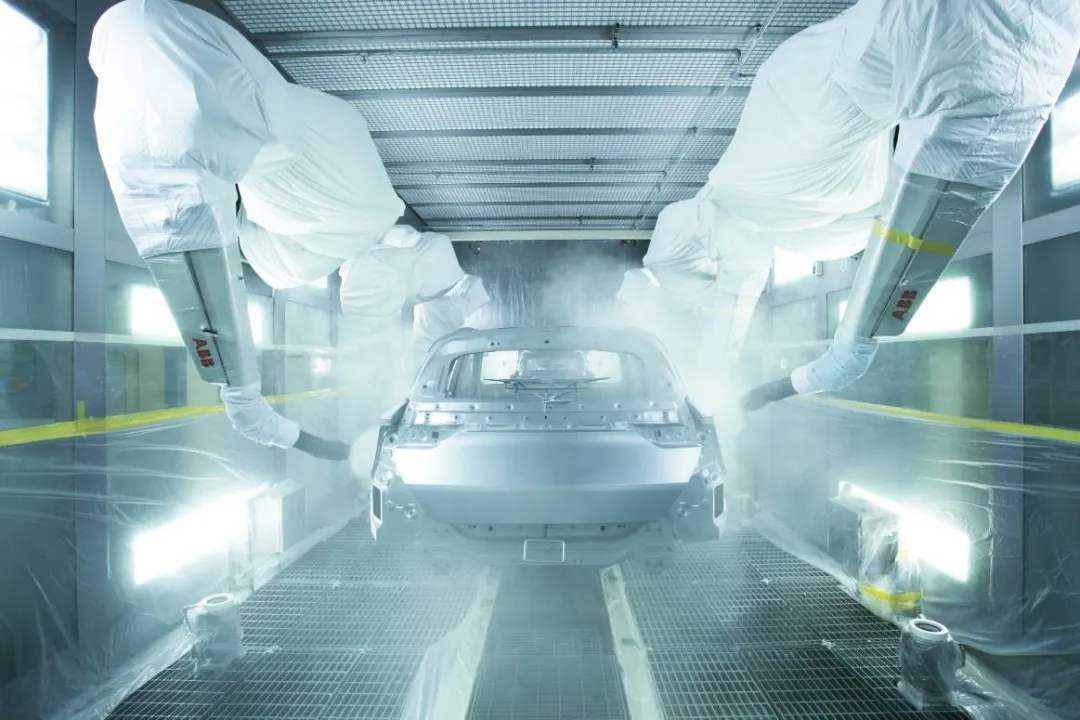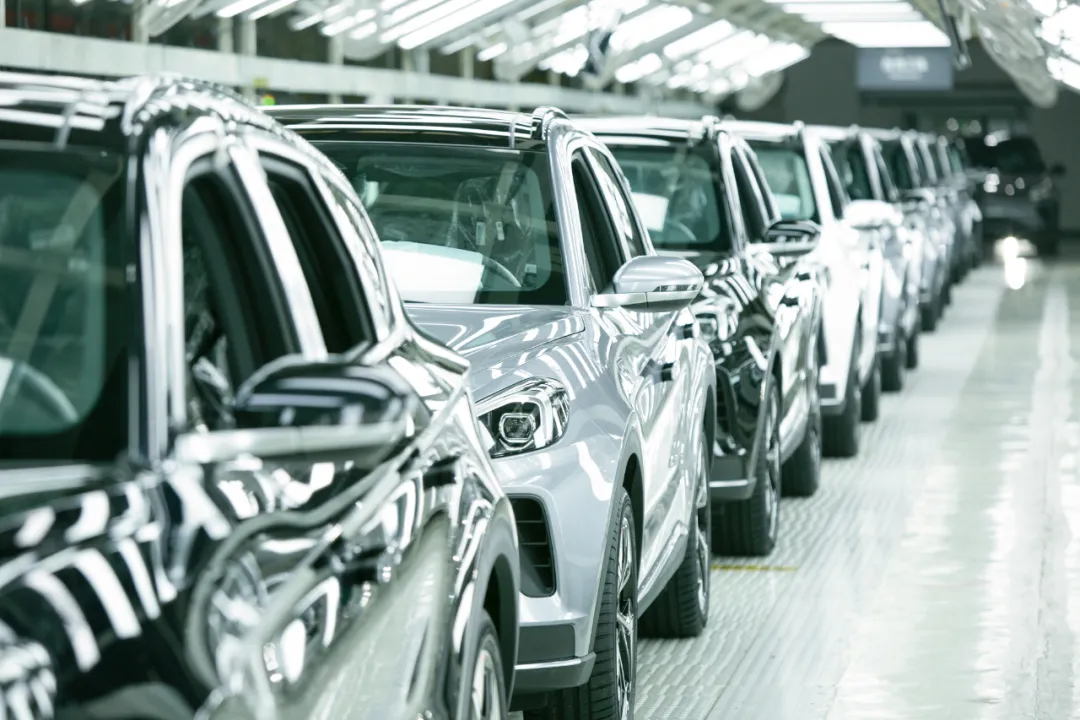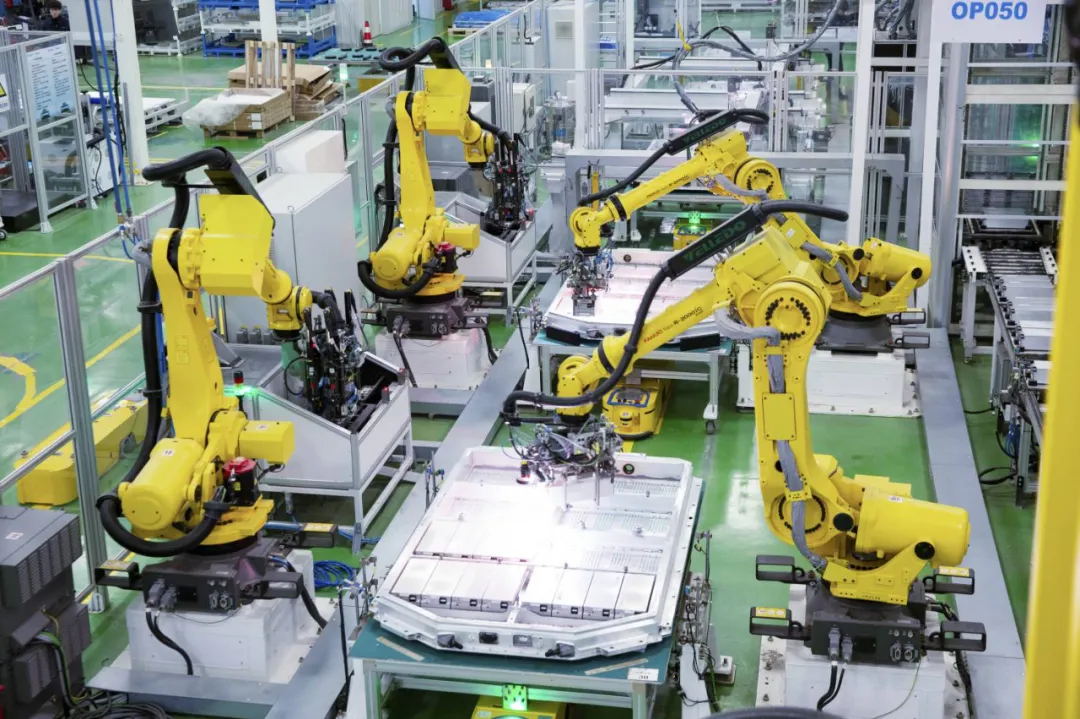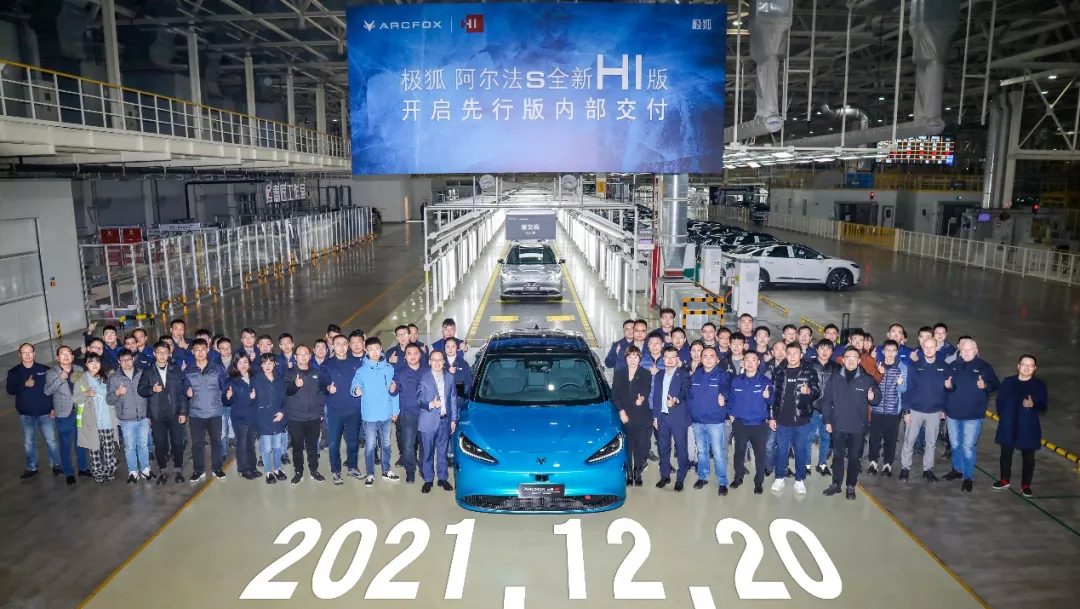Magna: The Real Producer of Mercedes-Benz G-Class
Mercedes-Benz G-Class is a hot product on social media in recent years. It is often seen in selfies by internet celebrities, mentioned in lyrics by rappers, and dreamed about by ordinary people. However, what many people do not know is that the G-Class is not actually produced by Mercedes-Benz themselves.
The real producer of the G-Class is Magna, a professional car manufacturer that produces luxury cars for many well-known brands. It has two factories around the world, one in Graz, Austria, which is the production site for the G-Class and other models.
Magna’s other factory is in Zhenjiang, China. In June 2018, Magna signed a contract with BAIC Group and the Zhenjiang Municipal Government to jointly establish a technological and manufacturing company. One and a half years later, the BAIC Blue Valley Magna High-End Smart Manufacturing Base was completed and officially put into production. The factory has a planned annual production capacity of 300,000 vehicles.
If you are willing, Magna can also build cars for you. This means that you can buy an Alpha T or Alpha S from Blue Valley Magna, or if you are an electric car brand owner, you can choose to entrust the manufacturing of your cars to Magna, just like how Mercedes-Benz did.
So, is Magna’s manufacturing level really strong?
On December 24th, I had the opportunity to visit the Blue Valley Magna factory. The pictures show that Magna handles the production of steel-aluminum mixed body parts and exterior components with high-quality new processes and good yield rate. Its painting workshop ensures the high quality and durability of luxury cars through material and process control. The final assembly workshop and battery pack effectively solve the unique assembly and calibration problems of smart and electric vehicles.
The most special thing is that MAFACT, the Magna factory concept, runs through the entire production process and maintains a high standard and efficiency. Plus, for the Alpha T and Alpha S, Magna uses a mixed punching process for their steel and aluminum body parts, which is the first in the industry.Compared with steel plates, aluminum alloy has better plasticity, but it also brings some problems. When using stamping technology, the probability of product defects in stamped parts is high. For example, the elastic modulus of aluminum alloy is small, and the parts are prone to rebound.
The stamping workshop of the Jihoo Jizhi factory is a fully enclosed, high-speed automated production line, mainly responsible for the production of large and medium-sized stamped parts for car bodies such as the side wall, fender, and door cover.
According to Zhou Fang, a stamping process engineer, the stamping workshop has a total of 40 self-made parts, including 15 aluminum parts, such as the front and rear engine hoods and trunk lids.
As for steel plates, they are also divided into different materials such as non-galvanized steel plates, galvanized steel plates, and laser welded panels.
In order to make so many types and specifications of stamped parts, the stamping workshop needs to be able to quickly change molds, increase the proportion of shared tools, and reduce maintenance time.
The Magna MAFACT system standard ensures the efficiency and quality of the stamping workshop. According to Chen Long, an expert on Magna MAFACT at BAIC Blue Valley, after the application of MAFACT, the mold replacement time of the stamping workshop is shortened by 42.3%; the preventive maintenance time of the press is shortened by 55.2%; the safety stock is reduced by 67.3%; the flexibility rate of tools reaches 90.5%, and the sharing rate reaches 28.6%.
Just being fast is not enough, and quality is also important. In order to do well in stamping of both steel parts and aluminum parts, Jihoo’s stamping workshop also adopted measures such as free rebound control to refine each stamp.
The first second workshop of car manufacturers is usually the welding and assembly workshop-joining stamped parts and external components to form the body. For the Jihoo steel-aluminum hybrid body, welding cannot meet the demand. Therefore, the name of this workshop is the body workshop.
The production rhythm of this body workshop reaches 30JPH, which is a fully automated production line. What we see in the workshop are various robots and equipment. The official data are 290 German KUKA robots and 206 sets of connection equipment.# KUKA Robot – The Leader Among the Global Top Four Robotics Families
KUKA Robot is known as the leader among the global top four robotics families, with a high-precision positioning capability of millimeters and the highest control accuracy in the industry. It mainly undertakes tasks such as transportation and lifting.
The car body is assembled with 206 sets of connecting devices, which mainly fall into three categories.
Firstly, there are 76 welding guns in the workshop, which are used to connect the steel parts.
Secondly, for the connection of steel-aluminum or aluminum parts, SPR and FSD equipment are used respectively.
Self-piercing riveting (SPR) is a method of connecting by piercing a rivet through the plate with impact force and forming a locking mechanism in the mold. This method avoids damaging the coating on the sheet during the connection process. There are 108 SPR devices in the polar fox car body workshop.
For parts that can only be operated on one side, FDS (Flow Drilling Screw Tapping) technology must be adopted. This technology drills screws into the plate to create holes, while rubbing and heating, and screwing at the same time, combining the benefits of riveting, screwing, and even welding. The polar fox car body workshop has 22 FDS devices.
In addition, there are 51 glue dispensers in the car body workshop. Structural glue was first used by luxury car companies such as BMW and Daimler, which can improve the fatigue strength, stiffness and anti-impact performance of the car body’s structural parts. The polar fox Alpha S uses 167 meters of structural glue, almost as long as the i3, which uses a carbon fiber and aluminum body.
In the car body workshop, MAFACT also plays a huge role. For example, in the riveting process, the first-pass qualification rate in China is generally around 95%-97%. However, the polar fox intelligent factory, following the MAFACT standard, has reached a level of 99% and is striving to achieve 100%.
The materials of the polar fox Alpha S body can be roughly classified into steel and aluminum. In fact, there are also aluminum alloy, ordinary steel, high-strength steel, hot-formed steel, and magnesium alloy.In the cage-type frame body, the key parts like A-pillar and B-pillar of the JAC iEV7S are made of hot-formed steel with a strength of above 1500 MPa, which is mostly used in tanks, submarines, and space shuttles, able to bear over 10 tons of pressure per square centimeter, equivalent to the weight of two adult elephants.
By utilizing these materials, JAC iEV7S achieves high strength and great weight reduction. The rigidity of the JAC iEV7S body reaches 63000Nm/deg, far surpassing rivals like Audi, BMW, and Tesla.
The weight reduction level of the JAC iEV7S is also very high. As introduced by Duan Lifei, the product director of JAC iEV7S, the lightweight coefficient of JAC iEV7S T is 1.78 and that of the JAC iEV7S S is 1.6, greatly leading the industry average of 2.8.
Coating Empowers Corrosion Protection
JAC iEV7S exhibits excellent corrosion resistance. In the trial and evaluation of the corrosion and aging performance of Chinese automobiles (CA-CAP), JAC iEV7S achieved five-star evaluation in terms of corrosion appearance, functional evaluation, and coating scratches, and finally won the first batch of platinum-level certificates for whole-vehicle corrosion resistance performance with a score of 92.3.
As Duan Lifei introduced, the performance of corrosion resistance and anti-aging is related to materials and processes. In terms of material selection, as mentioned earlier, JAC iEV7S uses a large number of materials such as galvanized plates and aluminum alloy, over 80% of which are corrosion-resistant materials for the entire vehicle.
Processes play a big role in coating technology. Firstly, in the first electrophoresis stage, JAC painting factory adopts high-permeability coatings from global paint giants like PPG. The so-called permeability refers to the coating coverage in the internal surface, concave-convex spots, and back surface of the car body during electrophoresis coating. The uniform and precise coating of electrophoretic paint is highly related to corrosion resistance.
The use of high-permeability materials enables sufficient coating thickness on the internal cavities of the vehicle body, while reducing the thickness of the outer panel paint film, reducing the amount of paint used, and promoting energy conservation and environmental protection.
In the PVC spraying stage, the workshop sprays JAC iEV7S chassis with anti-stone PVC to prevent the chassis from being injured by stones bouncing from the road during driving. Otherwise, the damaged chassis will be exposed to air and rainwater and become more easily corroded.
 In addition, in the painting process, the car factory needs to spray various damping pads on the body to reduce vehicle noise and vibration, which is an important way to improve NVH. Traditional damping pads are asphalt soundproofing mats, which are not environmentally friendly and have a strong odor. The Blue Valley Magna factory uses LASD water-based damping coating. This coating can reduce vibration and noise, and has the advantages of being environmentally friendly, safe for construction, etc.
In addition, in the painting process, the car factory needs to spray various damping pads on the body to reduce vehicle noise and vibration, which is an important way to improve NVH. Traditional damping pads are asphalt soundproofing mats, which are not environmentally friendly and have a strong odor. The Blue Valley Magna factory uses LASD water-based damping coating. This coating can reduce vibration and noise, and has the advantages of being environmentally friendly, safe for construction, etc.
Final Assembly: L4 Level Intelligent Driving Calibration Available
The Blue Valley Magna final assembly workshop is also highly automated with real-time monitoring of the vehicle, automatic reporting of vehicle position, automatic recognition and tightening of key processes, automatic measurement and adjustment of chassis key equipment, etc.
What’s noteworthy is that this workshop is capable of calibrating ADAS and even L4 level advanced driving assistance systems.
In order to cooperate with L2.5 level driving assistance, Blue Valley Magna has developed an independent ADAS calibration station with a HUD head-up display, MRR forward millimeter wave radar, and MPC forward camera for a one-stop automatic calibration, which replaces the traditional four-wheel workstation calibration and improves production efficiency.
To achieve L4 level advanced driving assistance, they have adopted a new redundant concept for a one-stop calibration station that can achieve automatic calibration of laser radar, millimeter wave radar, gyroscope, and camera simultaneously without any human participation throughout the entire process.

Under the high standards of Magna, the final assembly workshop has achieved high precision and efficiency, such as torque control equipment with an accuracy of 0.1NM, chassis measurement equipment with an accuracy of 0.1′, and RPS point repeat positioning accuracy of 0.1mm; all high pressure systems are measured online, all OTA modules are upgraded online, all cell voltage measurements and records are completed within 1s, and data is uploaded in real-time to the monitoring platform for online adjustment with a pass rate of 100%.
PACK Workshop: Building a 194Wh/kg High-Density Battery Pack
The Alpha S produced by Blue Valley Magna has the highest energy density battery pack in the industry: 194Wh/kg; the industry average is only around 160 Wh/kg.
This battery pack is produced by Blue Valley Magna itself.
First, starting from the module, in the battery pack workshop, they assemble SK battery cells through 20 processes to form AR battery pack modules. Then, with automatic rate of up to 53%, the battery pack is assembled with processes including automatic online, automatic inspection, glueing, cleaning, module installation and fixing, and FDS riveting process, etc.
According to Zhu Juncheng, the battery pack process engineer, “High automation ensures the precision, consistency and higher production efficiency of the overall process, providing better safety for the battery.”
After precise production, the power battery used by Jihoo must undergo more than 200 tests, which have a much greater range and intensity than the national standard. For example, the national standard for humidity cycling test is only three days, while Jihoo Automobile has to perform a high-temperature and high-humidity cycling test that simulates more than ten years of use, exceeding three months, and an alternating test of full operating temperature conditions exceeding eight months, to ensure that the power battery system can adapt to the usage environment across the country.

It can be seen that Blue Valley Magna inherits Magna’s tradition, and with the help of its leading production system, automated production lines, and production standards far beyond the industry average, it has developed the strength to create excellent automotive products. Moreover, Blue Valley Magna has made innovation breakthroughs and solved new problems in the production, calibration and testing of intelligent electric vehicles. If your car is built by them, it is undoubtedly reassuring.
This article is a translation by ChatGPT of a Chinese report from 42HOW. If you have any questions about it, please email bd@42how.com.